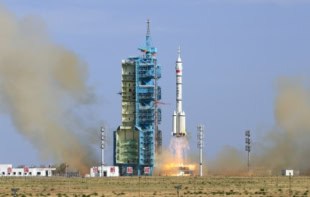Most people are perfectly content with three dimensions to carry out daily tasks -- or four if they take time into account. String theorists, on the other hand, think that many more dimensions are needed to develop a comprehensive theory of the universe's phenomena. Now, physicists in the US claim that these extra dimensions, which have so far evaded attempts to be found, could have effects that show up in radiation left by the Big Bang (Phys. Rev. Lett. 98 051301).
The Standard Model of particle physics does a good job of describing the three strongest fundamental forces: electromagnetism, the strong interaction and the weak interaction. However, it has so far failed to incorporate the fourth: gravity.
One of the ways in which physicists have tried to unify gravity with the other forces is to create theories that allow for many more spatial dimensions. In such “string” theories, the point-like particles long thought to be the building blocks of all matter are replaced by tiny strings that wrap themselves up in the extra dimensions. But although some claim string theories are the best contenders yet for a “theory of everything”, the extra dimensions are far too small to be found using conventional methods.
Now, however, Gary Shiu and Bret Underwood from the University of Wisconsin have done calculations to show that the shape of extra dimensions could have effects that show up in the cosmic microwave background (CMB) – an indelible map of the universe as it was some 380,000 years after the Big Bang. Although these effects alone would not present a way to prove or disprove string theory, it would mean that the details of extra dimensions have an observable impact on cosmological measurements. “Like anthropologists looking at fossils to reconstruct our history, detailed snapshots of the early universe may allow us to ‘see’ additional dimensions,” said Shiu.
These snapshots could be taken with CMB experiments such as NASA’s existing WMAP or the ESA’s Planck satellite, due to be launched in July 2008. But the precise way in which physicists interpret them will depend on how they model inflation – a period of exponential expansion in the universe preceding the creation of the CMB. Shiu and Underwood based their calculations on Dirac-Born-Infeld (DBI) inflation, a model frequently used in conjunction with string theory. However, regardless of which model is eventually established, the shape of the extra dimensions will always have an impact.
“String theory is by far the most promising framework to address questions about the early universe and the high energy frontier,” Shiu continued. “We are eagerly waiting for more and more data from precision cosmology.”



